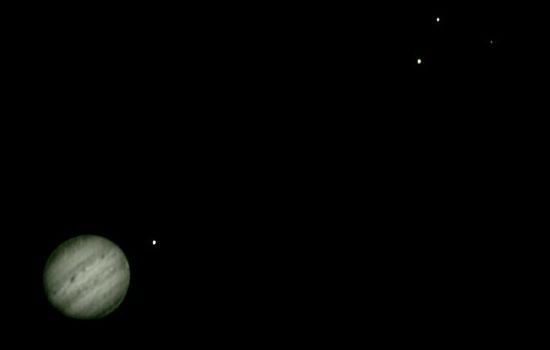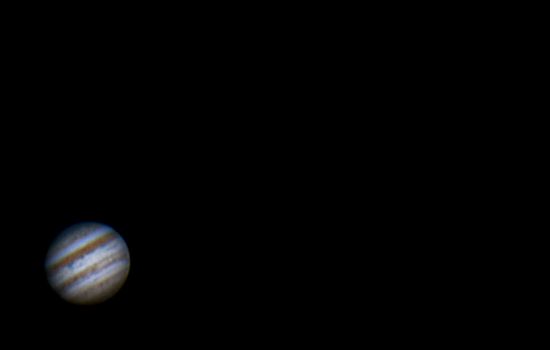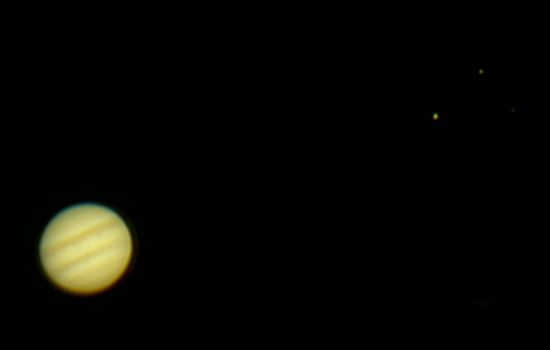 |
This picture was taken using infra-red light. The satellites are relatively brighter
than Jupiter in the infra-red so it is easier to render them and the planet together. Move your
mouse over the image to see which is which. The picture was taken only 51 minutes after sunset and the sky was
still quite bright. An advantage of imaging in the IR is that the sky scatters significantly less
light at infra-red wavelengths than it does in the visible. (That is why the sky is blue.)
If the picture is too dark to see Callisto, click on the image to see a version with the gamma increased to 2.0.
Click on your "Back" button to return here.
Date and Time: 27th May 2005 20:57 UT
Camera: ToUcam 740K
Telescope: LX200
Capture: K3CCDTools. High gamma, 1/25", 47% gain, 478 frames
Processing:
Registax. 213 frames stacked. Wavelet 1-3 = 10 Histogram 50-255
PhotoImpact. Contrast 36, brightness 15.
|
|
|
 |
Here is a picture, taken about the same time in visible light, and exposed for the surface features. The
satellites have not been resolved.
Date and Time: 27th May 2005 20:51 UT
Camera: ToUcam 740K
Telescope: LX200
Capture: K3CCDTools. Low gamma, 1/50", 15% gain, 403 frames
Processing:Registax. 180 frames stacked. Wavelet 1-3 = 10, gamma 0.8, contrast 125, histogram 10-220
|
 |
And finally a picture taken an hour later also in visible light but exposed to register the satellites.
You can see that, in order to capture the satellites, I have had to adjust the camera in such a way that the
surface features on the planet are not clearly shown. Nevertheless the satellites are not as bright
and Callisto may not be visible. Io has also disappeared, but this is because it had moved behind
the planet (it is said to be occulted) in the time between this and the previous image.
Date and Time: 27th May 2005 21:59 UT
Camera: ToUcam 740K
Telescope: LX200
Capture: K3CCDTools. High gamma, 1/33", 12% gain, 451 frames
Processing:Registax. 167 frames stacked. Wavelet 1-3 = 10
|

